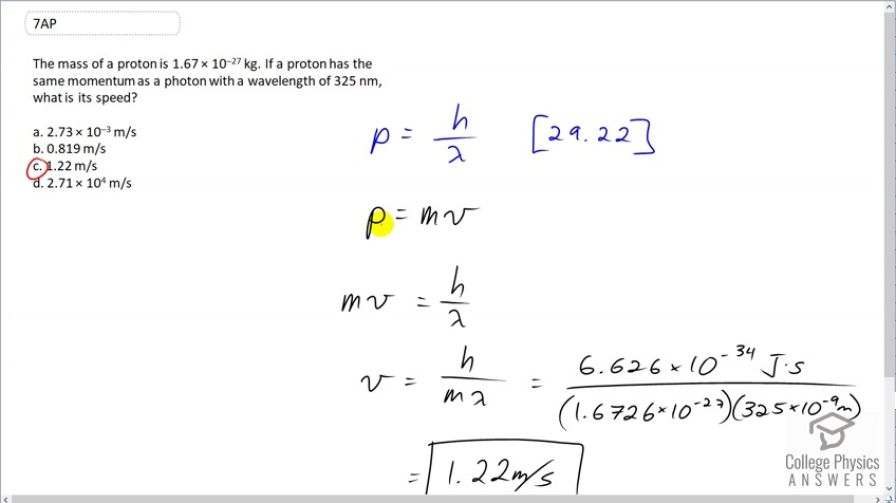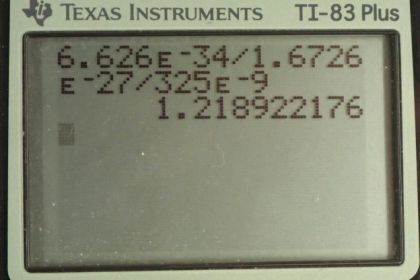Question
The mass of a proton is . If a proton has the same momentum as a photon with a wavelength of 325 nm, what is its speed?
Final Answer
(c)
Solution video
OpenStax College Physics for AP® Courses, Chapter 29, Problem 7 (Test Prep for AP® Courses)

vote with a rating of
votes with an average rating of
.
Calculator Screenshots
Video Transcript
This is College Physics Answers with Shaun Dychko. The momentum of a photon is Planck's constant divided by its wavelength— that's equation [29.22]. The momentum of a proton moving at a non-relativistic speed is its mass times its velocity. So let's equate these two things— mv and h over λ to figure out what the speed of the proton would be in order to have the same momentum as this photon of wavelength 325 nanometers. So we'll divide both sides by m here and we get that the speed then is Planck's constant over m times the wavelength. So that's Planck's constant divided by mass of the proton times the wavelength of 325 times 10 to the minus 9 meters which is the speed of 1.22 meters per second.
